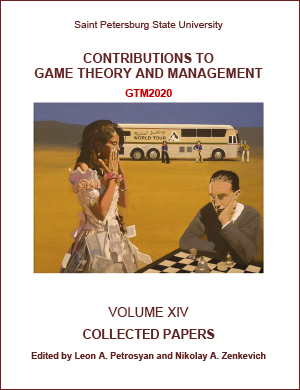Nash Bargaining Solution as Negotiation Concept for Resource Allocation Problem with Groves-Ledyard Mechanism
DOI:
https://doi.org/10.21638/11701/spbu31.2021.16Abstract
Motivated by research works on Zeuthen-Hicks bargaining, which leads to the Nash bargaining solution, we analyze experimental data of resource allocation gaming with Groves-Ledyard mechanism. The games were designed in the form of negotiation to allow players to reach consensus. Behavior models based on best response, constant behavior, and Nash bargaining solution are defined. Analysis conducted over decisions made by participants shows that a significant share of all decisions leads to an increase of the Nash bargaining value. It is even higher than the share of decisions that are in agreement with the best-response concept. Consensusended games show light attraction to the Nash bargaining solution, it's less than we obtained in games with the mechanism of Yang-Hajek from another class of so-called proportional allocation mechanisms. We discuss differences of consensus-ended games from timeout-ended games, what decisions lead to the situations with the Nash bargaining value increasing and differences between balanced mechanism Groves-Ledyard and unbalanced mechanism Yang-Hajek.
Keywords:
resource allocation mechanisms, Nash implementation, Nash bargaining solution, Groves-Ledyard mechanism
Downloads
References
Downloads
Published
How to Cite
Issue
Section
License
Articles of "Contributions to Game Theory and Management" are open access distributed under the terms of the License Agreement with Saint Petersburg State University, which permits to the authors unrestricted distribution and self-archiving free of charge.




